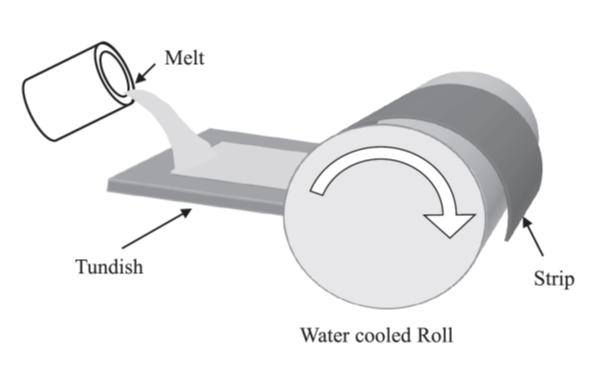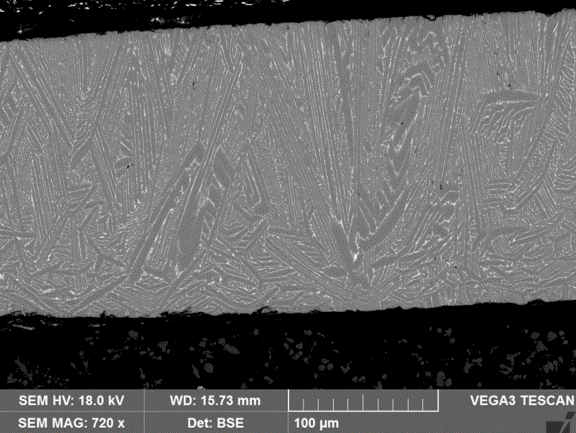Strip Casting is a rapid cooling technique of metal melts, widely used in industry for NdFeB because it allows the suppression of alpha iron dendrite formation as observed during slow cooling (book mold process). In addition the microstructure is ideal for the next steps of the standard sintered process process: hydrogenation and fine particle milling (<5µm). The metals are induction molten in a ceramic crucible, then cast on a rotating copper wheel through two intermediate receptors called tundish, whose function is to homogeneise the liquid metal flow. The principle is shown on the Figure 1, and the short video below shows the casting of the flakes from differents angles.

Figure 1: Strip casting principle
The microstructure of the strip-cast ribbons is shown on Figure 2. It consists of dendrites of the magnetic Nd2Fe14B phase separated by thin layers of so-called Nd-rich phase. The Nd-rich phase plays a determining role in confering coercivity to the NdFeB magnets, while remanence is provided by the Nd2Fe14B phase.

Figure 2: Microstructure of a strip-cast NdFeB ribbon (backscattered electron SEM picture)